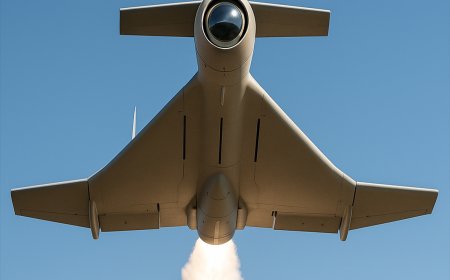Pakistan shoots down 77 Indian drones in two days amid tensions
Pakistan’s army claims it shot down 77 Indian UAVs (48 in 24h), many Israeli-made. Details, DG ISPR quotes, affected districts (Vehari, Okara, Pakpattan) and regional reaction.

Pakistan’s military says it has intercepted 77 Indian drones over the past two days, including 48 in the last 24 hours According to official statements, these unmanned aerial vehicles (UAVs) – many described as Israeli-made (Heron/Harop) models – were shot down in multiple locations across Pakistan. Security sources reported that 29 drones were downed by the evening of May 8, with 48 more neutralized overnight into May 9. Affected areas included rural districts of Punjab: one drone each over Vehari and Pakpattan, and four in Okara, among others.
Local media released photos of charred drone wreckage after Pakistani forces intercepted UAVs. Pakistan’s military said images like these (above) show debris from downed Indian drones, underscoring its claims of a strong air-defense response Maj. Gen. Ahmed Sharif, the army’s public spokesman (DG ISPR), stated that all drones were “continuously monitored on radar” and “our air defense system has the capability to track even small drones” The military says it followed strict procedures to shoot down the UAVs over civilian areas, ensuring no passenger aircraft were affected. Federal Information Minister Atta Tarar also confirmed one Heron drone was downed in Bahawalnagar, saying Pakistan’s “agile and effective air defence” repelled the attack.
Air defense and tactics: Pakistan’s armed forces emphasize that its radars and defense network quickly detected the incoming drones. A senior air-defense officer (speaking on condition of anonymity) explained that many of these UAVs were apparently fitted with electronic support-measure (ESM) sensors to locate Pakistani radar emissions. “Their purpose is to detect radiations of ground-based air defense systems,” he said, so Pakistan initially allowed the drones to approach without firing missiles. Instead, air defense units jammed or “soft-killed” the UAVs and then used gun-based systems at low altitude to shoot them down once they were safe to engage. This approach prevented the drones from gathering intelligence on Pakistan’s defensive installations while avoiding greater risk to civilians or friendly aircraft.
Pakistan’s available air-defense hardware includes ground-based radars and anti-air missiles, as well as fighter jets (such as Chinese-made J-10s and U.S.-built F-16s) on alert. The military asserted its systems are “extremely strong” and capable of thwarting sophisticated threats. In fact, Pakistani officials have previously noted that their J-10 fighter jets (built by China) successfully engaged Indian aircraft in recent clashes. However, beyond these official statements, independent verification of shootdowns is limited. (India has not publicly confirmed the drone incursions or any related losses on its side.)
Locations and damage: In addition to Vehari, Pakpattan and Okara, Pakistani reports mention downings near Rawalpindi (the army’s headquarters city), Lahore, Chakwal, Attock, Bahawalpur, Mianwali and Karachi. On May 8, Pakistani media said a drone was shot down near a Lahore military site, wounding four soldiers and causing minor damage. Tragically, Pakistani officials admit that at least three civilians were killed in the drone strikes. (Separately, Pakistan says five civilians died that night from Indian shelling along the Kashmir Line of Control.) Pakistan has sealed its airspace and shut border crossings amid this escalation.
Drone technology: Pakistani statements describe the downed UAVs as Israeli-made. The Tribune (Karachi) reported they were IAI Harop loitering munitions – high-altitude drones designed to loiter for hours and strike by crashing into targets. The Harop can fly up to 35,000 feet (beyond the range of many anti-aircraft guns) and loiter for about 9 hours. It carries electro-optical and infrared sensors, plus anti-radar homing capabilities for target detection. A Pakistani officer noted it can locate radars and other emitters, report back, then dive on them once commanded. (India also operates the Heron UAV from Israel, a medium-altitude surveillance drone, which Pakistan’s forces intercepted in previous strikes.) These descriptions of Israeli UAV models underline why Islamabad emphasizes the drones’ origin, though independent sources cannot confirm the manufacturer.
Regional context: These drone exchanges come amid the worst India–Pakistan conflict in decades. The flare-up was sparked by a militant attack in Indian Kashmir on April 22 that New Delhi blamed on Pakistan-based groups (a claim Islamabad denies) On May 6, India launched airstrikes on “terrorist camps” in Pakistan’s Baluchistan and Punjab provinces, killing civilians by Pakistani account. Pakistan retaliated with missiles and drones against targets in Indian Kashmir (which India says were neutralized). Pakistan’s claim of downing 77 drones is its latest response in this tit-for-tat cycle.
India’s official stance is cautious. An Indian defense ministry statement said Pakistani drones and missiles had targeted sites in Jammu and Kashmir and were “neutralised” by Indian air defenses. India has denied striking civilian areas in Pakistan, and its government dismissed at least one Pakistani claim as “misinformation”. Islamabad, for its part, denies attacking India’s Pathankot, Srinagar or Jaisalmer, calling such accusations “entirely unfounded”. Both sides have accused the other of propaganda and spreading disinformation during the crisis.
International reaction: Global leaders have urged restraint. The UN, United States, China and Russia have all called on India and Pakistan to de-escalate. The U.S. Consulate in Lahore advised staff to shelter in place. On May 9, U.S. Vice President JD Vance reiterated that “we want this thing to de-escalate as quickly as possible”. Saudi Arabia sent Foreign Minister Adel al-Jubeir to both New Delhi and Islamabad seeking a ceasefire. Islamabad’s foreign office accused some Indian media of fanning a “disinformation” campaign to justify aggression. Nonetheless, markets and civilians remain on edge in both countries amid the unprecedented drone feud.
Summary: In sum, Pakistan’s military publicly claims it has shot down dozens of Indian reconnaissance and loitering drones (reportedly Israeli-made) in recent days. These reports – confirmed by Pakistani officials and state media – portray robust air defense operations around major cities and strategic sites. Independent sources have not verified all details (and India has not acknowledged the incursions), but Reuters and AFP have cited Pakistani state TV reports of 77 drones downed.The incident highlights a dangerous new dimension of India–Pakistan hostilities, raising tensions between the two nuclear-armed neighbors.
What's Your Reaction?










































































































